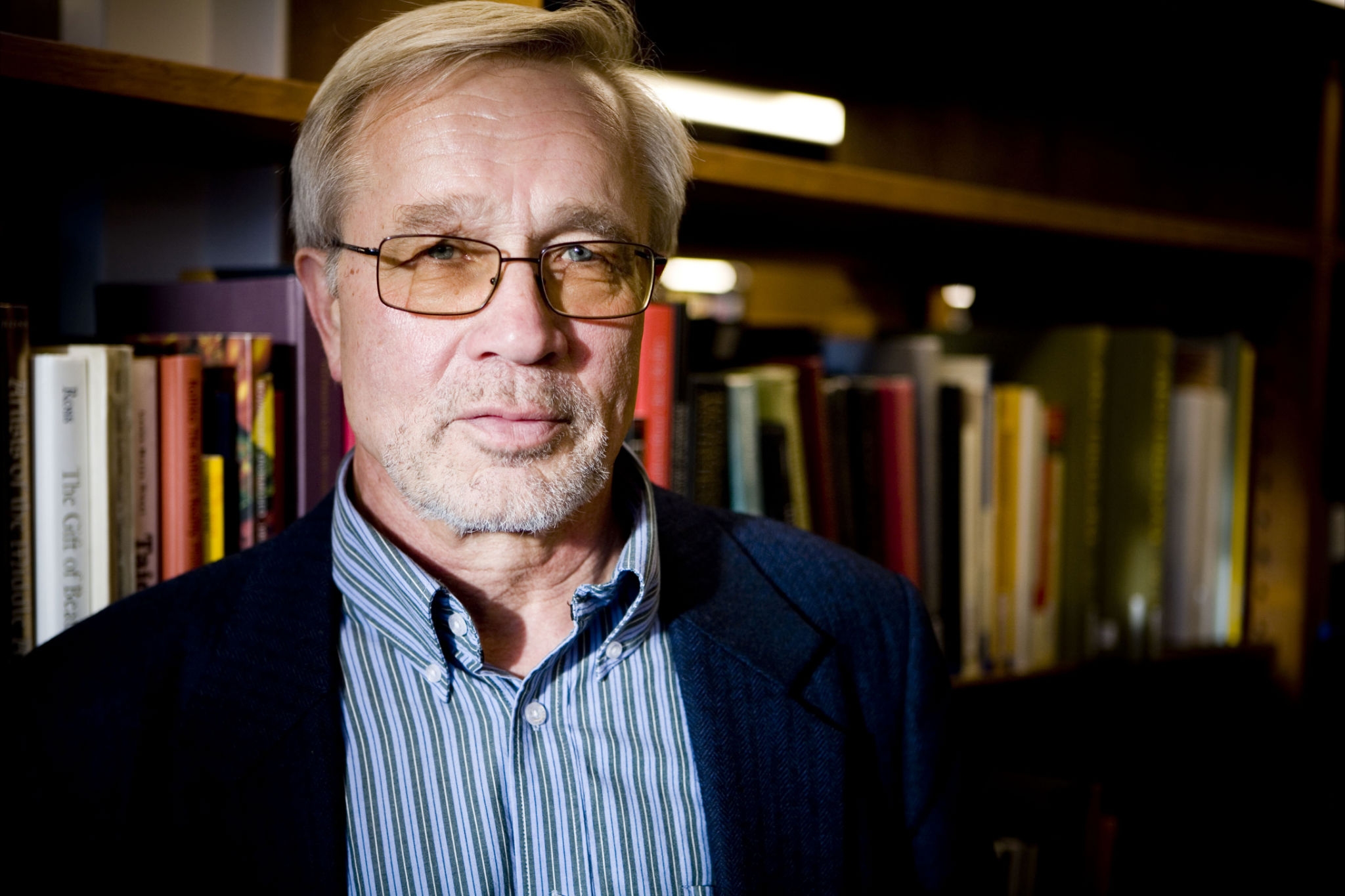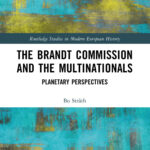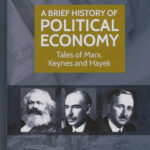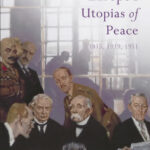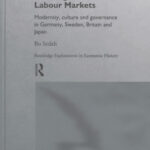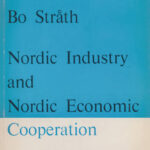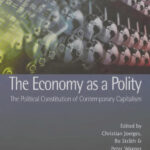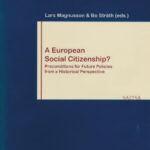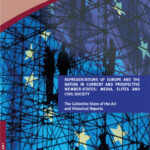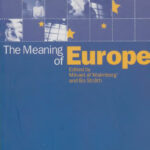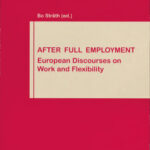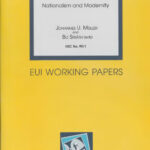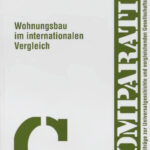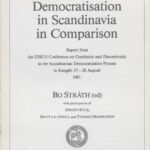The development of the financial markets since the 1970s crisis has rejected the assumption about mutually reinforcing dynamics between capitalism and democracy. Joseph Vogle argues in Capital and Ressentiment: A Brief Theory of the Present, Cambridge: Polity Press 2022 [German original 2021], that the new entrepreneurial forms of power in digital platform capitalism go hand in hand with the dissolution of democratic procedures and institutions. This observation is, per se, not very sensational. It rather confirms the world as it looks today. Bitterness and indignation have replaced the civic commitment to res publica for quite some time. The interesting thing is Vogl’s discussion of how this happened, which is more complicated than an opposition between the state and the market or politics and the economy. And we must understand the situation from a longer historical perspective, he argues.
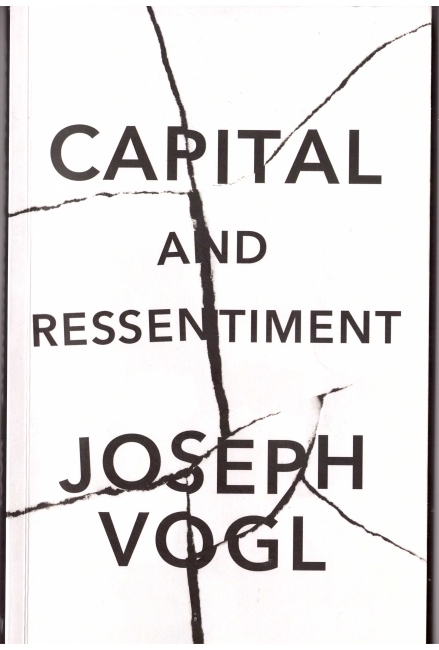
Joseph Vogl, Capital and Ressentiment. Cambridge: Polity 2022
Original: Kapital und Ressentiment. München: Beck 2021
The opening is powerful in its historical exposé of what Vogl calls the new monetarized power emerging after the dollar crisis in the 1970s leading to a belle époque of finance capitalism which ended in a bursting speculation bubble in 2008. The end was to the belle époque, not to finance capitalism. The period saw several hundred bank and currency crises. It was a belle époque of structural instability, where turbulence and crashes were routine, and crises became stationary. New business ideas, fanatical political interventions, and ideological spins under the name of economic theory paved the way, when, in response to the 1970s crisis, the new finance capitalism broke out of its previous welfare containment “to dictate the fate of nation-states, societies, and economies” (1).
The new finance capitalism was very different than the old industrial economies producing commodities in factories where investments in buildings and machines lasted for decades and were fixed to the place where they were established. The new finance capitalism making profits from trading with money instead of commodities, where money was both raw materials to buy and product for sale, was much more volatile. The value creation was value destruction. Of course, the monetization of the economy was not new. Financial bubbles that burst are an old phenomenon. However, the scale of the financial operations, and their permeating the world society was totally new.
The welfare containment that financing capital’s belle époque made an end to was based on strong unions, banking regulation, capital and currency controls, tax and social policy, long-term investment and mass production for mass consumption. It was created in reaction to the 1920s/30s world crises and the world war that followed them. With references to Weber, Schumpeter, Keynes, and Polanyi, “the times of the unleashed markets of an extremist capitalism seemed to have finally found their end” (2).
However, the Keynesian end to the cartel and casino capitalism of the 1920s and 30s was not for ever but temporary. The unrestrained capitalism came back after half a century. The 1970s crisis around the dollar meant the demise of an order that pegged important currencies to the dollar and the dollar to the gold and the shift of the US from being a creditor to a debtor. The dollar collapse and the subsequent fast erosion of the Fordist production regime, accompanied by growing unemployment and high inflation, did not find an answer in Keynesian demand management. The liberal doctrine of monetarism filled the heuristic gap. According to that doctrine, there is an automatic link between money supply and economic performance in terms of budget deficit or surplus. Against the backdrop of growing budget deficits and increasing inflation, budget balance and austerity politics became the prescription for a new healthy economy. If there was high unemployment it was in the new economics grammar not because workers’ purchasing power was too low but because the wages were too high. The other decisive step in capital’s emancipation from the postwar Keynesian welfare state order was the liberalization of the capital movements which narrowed the national governments’ scope of action.
Vogl shows how monetization beyond the control of national governments brought state-financial rigidity and austerity and private-economic abundance through the expansion of the finance industry. In the USA, the finance, insurance, and real estate industries, which in the early 1960s comprised 30 per cent relative to the manufacturing industry, expanded this share to 90 per cent around 2010. This monetization was an expression of the growing role of the global financial markets and their (de/re)regulating institutions and normative power.
This expansion of the finance industry was in full swing when the World Wide Web opened in 1993. Henceforth, trade with capital values expanded exponentially. Automated exchanges for estimating options and futures emerged in the 1980s as a fusion between financial theory, information technology and mathematics. The automatic subject of capital that Marx referred to, reached the stage of its own automation with the www, as Vogl phrases it. The scope for economic action and transaction grew when social processes became programmable through information theory. The currency standards that had framed the financial markets shifted to the information standard as the basis of world finance, information that could be transferred in nano seconds. The stabilization of the credit economy around trade surpluses and deficits no longer needed conversion into gold or commodity money but was structured around the exchange of money and information. Capital markets became signal-processing arrangements and opinion markets about the estimation of the future. The expansion of capital markets became decoupled from investments in industrial production and economic growth dynamics, where rising profit rates confronted declining investments. Previously untapped sources of value creation held out the prospects of overcoming the limits of capitalist expansion.
Reading Vogl’s formulation of the way to the new brave world brings to mind the German banker Josef Ackermann, a consultant to Angela Merkel and the EU after the collapse of the financial markets in 2008. As late as 2011, he talked about 25 per cent annual capital growth as a new reasonable standard. The consultant advising the EU leaders was the fox set to watch the hens, but this was how politics was made in those days, blended by the political conviction of the untapped potential of financial markets and the felt necessity to intervene with tax payer money when the gamblers on these markets overplayed their hands because they were “too big to fail.” The governments covered huge speculation losses after the crash in 2008 and the value-destroying monetization could continue after the political revaluation.
The finance-capitalist fast understanding of the Internet’s possibilities of value creation without limits led to the invention of new activity fields. The commercialization of the Internet expanded the alliance of the Internet and finance in new directions when the US deregulated the telecommunications market. Large corporations emerged around the principle of outsourcing considerable parts of the costs for services like renting a car or an apartment or selling air tickets online. One could offer car trips without making and selling cars, accommodation without owning real estate, or air travel without owning an aircraft. To manage additional cab rides or accommodation, it was no longer necessary to expand the vehicle fleet or the real estate portfolio, but only one’s computer capacities, as Vogle aptly puts it. He refers to a demand economy of scale. The Fordist mutually reinforcing dynamics of consumption and production was transferred to a similar arrangement between production/provision and consumption of services, particularly financial, i.e. credits and information.
Vogl pays attention to another feature of the new platform and Internet corporations: they seem to have an intrinsic quasi-natural tendency to form monopolies and oligopolies. They put the old liberal myth of competition out of play and celebrate new libertarian ideals about starting small and monopolizing. Many of the leading Tech corporations once began as small startups. Creative disruption does not mean the destruction of capitalism but of competition. The goal of disruption is capital concentration. Capitalism and competition become opposites. Under perfect competition, all profits are competed away. The goal of disruption is growth and market dominance under erosion, privatization or destruction of state structures and public welfare institutions, Vogl argues.
The motto “start small and monopolize” (Peter Thiel) accompanies the demarcation to the competition and anti-trust norm. This motto is connected to the American dream: start with two empty hands and work yourself up to richness. Make the capital work for you. It is an individual undertaking. Is it maybe, on this point, one can understand how the furious and resentful losers of the descent of Fordism in the Rust Belt build their political expectations on the new monopolists in the tech and media industry? They are heroes to identify with. In Europe, there is the Silvio Berlusconi case around his ascent to prime minister, although his capital accumulation was smaller and had less technological cutting edge.
This difference between the tech oligarchs and Berlusconi might be a more general difference between the US and Europe. Although this question is not part of Vogl’s book, it is instructive to read a report by a commission led by Mario Draghi to the EU Commission in 2024: The Future of European Competitiveness. The point of reference is the USA, and the problem deals with how to catch up:
In fact, there is no EU company with a market capitalization over EUR 100 billion that has been set up from scratch in the last fifty years, while all six US companies with a valuation above EUR 1 trillion have been created in this period. This lack of dynamism is self-fulfilling.
Draghi’s point of reference and goal is the USA. Why should it be? The language about the way to a better future in the Draghi report is very different than when listening to the chorus of Musk, Thiel, Zuckerberg, Bezos and others in the picture that Vogl paints (yes, listening from a painting is a daring metaphor). The task is a public political concern, and the EU is responsible for organizing the catch-up. Sustainable competitiveness, economic security, fair competition, digitalization, and decarbonization are goals and means. The Draghi report talks about preserving equity and social inclusion values, peace and democracy in a task set to reignite sustainable growth. The report talks about large-scale investment schemes, both private and public, in cooperation and coordination.
A comparison of the Draghi report and Vogl’s outline of the expansion of the US finance capitalism provokes two questions: Is it possible that the US is about to redeem Marx’s and Lenin’s prophecy about increasing capital accumulation and, in the end, monopoly capitalism? Is it also so that the European way deals with the fulfilment of another version of capitalism with more social inclusion, closer to the welfare economy that preceded the belle époque?
The European internal market was never a matter of laissez-faire at its introduction in 1993. There was undoubtedly a Transatlantic neoliberal business community in the 1990s, and social democrats and conservatives became neoliberal market worshippers, confirming the globalization narrative about the one world, market-compliant and without alternatives. However, Jacques Delors’ design of the internal market was not laissez-faire and, although the 1990s brought neoliberal impulses to the market project, there was a difference in the practices of market relentlessness and rules between the EU and the US. The US was more laissez-faire, Europe more state. The recently louder voices for disruption seem more convinced and more determined in the US. When liberals in Europe take the word in their mouths, they hesitate, as if they are shying away from the consequences of the word.
What does Draghi mean when he argues for more competition and uses the USA as the gauge? Why not expressly see Europe as a potential future alternative to the USA? Are there variations of financial capitalism? Vogl’s account doesn´t go into such questions but reading his books provokes them.
To what extent platform corporations and the finance industry are the future is also a question about to what extent the current financial regime ‒ with tax evasion, austerity, and extraordinary money policies, providing liquidity to markets and maintaining the flow of credit ‒ will remain unchallenged or can be confronted politically. The financial regime that replaced the Fordist production regime is also a question of employment and labor standards. In discussing that question, Vogl refers to the three largest automakers with 1,2 million employees and a market capitalization of $ 36 billion with revenues of $ 250 billion in the late 1990s, comparing them with the three largest Silicon Valley companies, which in 2014 had revenues of about the same size, $ 247 billion, but a market capitalization of $ 1.9 trillion, 50 times more than the car producers, with 137,000 employees, 11 per cent of the car producers. WhatsApp, with 55 employees, was sold to Facebook for $ 19 billion and Instagram with 13 employees for $ 1 billion. Amazon, with 800,000 employees, has a market value of $ 1.2 trillion, a third of Germany’s domestic product. Outsourcing labor to production sites where it is cheap, with growing precarious markets, and the transition from fixed employment to freelancing, contractors, and subcontractors, self-employment, piecework and part-time work are key components of the cost-saving and profit-optimizing trend.
Vogl refers to Gille Deleuze’s 1990s argument that Foucault’s capitalism maintaining itself through discipline, with enclosure as an instrument, had shifted to control societies with debt as instrument where passwords replace border controls. What Deleuze discerned as the future in 1990 has now become concrete in the operations of the platform industry. As control is capitalized, profit-generating, the consequence on governance is at stake, Vogl concludes (59).
Vogl describes how older separations between news, entertainment, and advertisement disappeared and how “infopinions” merged and replaced them. Marketing brought branding and branding brought new values. Differences between true and false, belief and knowledge were dissolved, and feelings of truth and truths of feelings emerged.
In a chapter aptly titled Fable and Finance Vogl gives a long historical background to one particular dimension of recent developments. Vogl refers to Herman Melville’s The Confidence-Man published in the midst of American industrialization depicting one day aboard a Mississippi river boat with a motley passenger group, a legless beggar, a wordily “cosmopolitan,” a bankrupt divorcee. Melville describes their tricks and deceits, the impersonality that both joined and separated them in the cash society emerging with industrial capitalism. The underlying question of Melville’s satire dealt with trust in a world of self-interested strangers. Fraudulent optimism, dark visions, illusions of progress… The confidence man operates by first gaining trust from a victim and then cheats the victim out of money through deception. Confusion of narrators and protagonists, multiplication of narrative instances ‒ one and many at the same time ‒ contributes to the impression of a surrealistic game of self-sustaining fabulation. What has changed more than 150 years later?
Reflecting on that question one might add to the information that Vogl provides: Melville’s book was first published in April 1857. In August that year the world experienced its first major panic in reaction to and underpinning a financial crisis that became global when the New York branch of an investment house ceased payments after a cashier had embezzled its funds.
Vogl depicts the continued relevance of Melville’s satire. It is an old story of what he calls truth games framed by pseudological structures reminiscent of the principle of insufficient reason that Musil develops in Man Without Qualities. Pseudological is a term in a linguistic nexus where one also finds pseudonym meaning fictitious name, not false but not true. Pseudo is ambivalent like apparent and seeming. They are obvious in what one sees and in what appears but there might be other realities behind the visible. Trust and suspicion are entangled rather than distinguished opposites. Fables are certainties beyond lies and deceptions stabilizing discourses in ways that annul frauds.
Based on this long-term historical scenario, Vogl develops in the last chapter what he calls the cunning of ressentiment-driven reason. In a time when boiling emotions drive infopinions in social media, he shows that, like with capitalism and deception, capitalism and affects have a long pre-history. He refers to Kant’s unsociable sociality and nations of devils as part of human nature. There is also Karl Marx who called the excessive greed in capitalism, the incessant drive for enrichment and vulture, abstract hedonism.
Vogl points to the connection between affects and passions on the one hand and economic processes on the other. It looks reasonable to assume the digital revolution with its high-emotional social media has reinforced this connection. However, as Vogl shows, the story is much older. Economic man has not only rational and computable talents but is also a passionate subject with capacity to exchange old Christian vices for new and profitable assets. Greed was redefined as thriftiness. The transformation of the view on interest rates is a case in point here. And Karl Marx’s hedonism.
Ressentiment is a concept with an emotional rather than a moral drive. The ressentiments are a socially relational structure and a mode of communication. Emotional ressentiment as an ingredient of economic morality is a mix of calculating reason and toxic sentiments. One important point of departure and trigger of ressentiment is the tension between the normative equality of rights and the actual inequality of conditions which made the comparison a source of ressentiment. However, not automatically, as a structure of liberal economy itself, as an immediate result of inequality, but through emotions that could provoke various reactions to economic disadvantages. The reaction is contextual rather than structural. Social and economic relations are in a permanent process of evaluation and judgement correlating evaluations to devaluation. The latter is a reaction to evaluation. Ressentiment is the moral-historical product of capitalist creation and destruction of values, “an economic moral principle with the propensity to assume the heft of an objective spirit” (120).
What spirit here means to Vogt is somewhat unclear, but it leads the thought to Max Weber’s capitalist spirit in two articles in 1904/05 where he connected the capitalist spirit to a special kind of protestant ethic. where Vogl’s emotional ressentiments is in Weber’s protestant ethic a capitalist moral self-suction of being divinely predestined for entrepreneurial success. Vogl’s ressentiment spirit is obviously a different spirit than Weber’s, but one could understand it as a more emotional version. However, in a next move Vogl connects his spirit of ressentiment-driven reason to cunning. The words spirit and cunning inevitably lead the thought to Hegel’s cunning of reason through History, a cunning contained in the world spirit. It is difficult to see Hegel’s metaphysic in this context. A connection to Weber’s capitalist spirit is easier to follow. It works despite the differences between emotions in one case and morals in the other. Vogl’s objective capitalist spirit is a metaphor for a stabilizing catalyst, a device intrinsic in capitalism. Hegel’s cunning reason is a different category.
Vogl’s most interesting analytical operation is when he connects his psychological, conceptual-historical, and anthropological discussion of ressentiment to the social and political implications. He highlights the series of bursting speculation bubbles leading to bank crashes and highly emotional reactions, the so-called panics, connecting 2008 with the 1870s. The boiling emotions lead to ressentiments with strong feelings of wrath and protests against greed and predation expressed as nationalism and antisemitism. However, they never destroyed capitalism. It always came back.
Vogl’s outline of this connection of capitalism to nationalism and antisemitism through ressentiment is rough and provokes questions about details but the thesis about capitalist speculation bubbles as a trigger of nationalism and antisemitism when they burst is convincing. Ressentiments as a catalyst, a stabilizing capitalist reset device for a new speculation drive is a provocative thought but functions in the long historical perspective since the 1870s. And for the future? The present excesses in xenophobic nationalism and populism have hardly weakened capitalism as the US case demonstrates.
On this point, one might come back to the discussion of the EU and Draghi in comparison with the US above. What is the role of government and politics in the series of ressentiment-driven reestablishment of capitalist order? Only to mobilize money for the saving of what is argued to be too big to fail? Reinforcing the ressentiments directing them against parliamentary democracies, which put too many spanners in the economic wheels? Who are the agents that connect ressentiments to a cunning reason? Do they represent different possibilities, opportunities, or alternatives?
Vogl doesn’t go into such questions, but he paves the way for them. There is a historical example that sheds light on the question of whether governments have a choice in situations of deep crisis. In the 1930s, the mainstream economic doctrine prescribed austerity when mass unemployment spread. In March 1930, the big German coalition government under the Social Democrat Hermann Müller failed to agree on the financing of the mass unemployment and resigned as the last parliamentary-based government of the Weimar Republic. The presidential emergency governments took over opening the way for Hitler three years later. In May 19033, a few months after Hitler’s takeover, the Swedish social democrats and farmer party forged a coalition government for stabilization of the economic crisis on the formula of higher unemployment pays and higher milk prices. But for a brief interlude of a few months, this became the beginning of 43 years of social democratic prime ministers. Both cases were about politically coming to terms with deep ressentiments in the wake of mass unemployment after a burst bubble.
This Swedish German comparison of choice and alternatives in parliamentary-democratic politics, provokes new questions. How different is “capitalism” today? What does the shifting driving force from steam to oil to algorithms (from where they get their energy?) mean in terms of political monitoring and shaping of the future? Is today’s economy inevitable? There is a monotonous tendence in Vogl’s outline of capitalism with little reflection on varieties over time and space. One might with such questions refer to Clara Mattei’s How Economists Invented Austerity and Paved the Way to Fascism (2022). She argues for bringing economic thinking back into its proper place among philosophers, historians, intellectuals and government experts in discourses about alternatives. She compares working class struggle for emancipation and the fascist/conservative counter revolution in Italy and Britain in the turbulent 1920s and brings that analysis up to the present. The multi-layered austerity politics these years were the beginning of a centenary technocratic project to make capitalism without alternatives and firmly mold its class relationships. There we are, she argues.
It is easy to agree with Vogl that financial crises hurt modern democracies and entail politically disruptive effects, but the crucial question that his thesis provokes is how endogenous or unavoidable are financial crises? When capitalism has free rein, they obviously look like intrinsic parts of capitalism. However, is there a way to regulate financial markets and capitalism, like during the trentes glorieuses that preceded the 1970s crisis? Vogl’s final words are thoughtful:
“Even if history has no endings and never reaches an utter impasse, it must be conceded that the hostility of all against all has become not only a successful business model but has also created an extremely sustainable feeling of community. It is not impossible that it will provide the ferment for a new prewar era” (134).
There is no doubt a historical pattern that this warning falls back on. War as a productive economic force. Vogl’s warning is a presentiment of the possible consequences of the present piling up of ressentiments.
The pandemic, when Vogl published his book, was a nebulous time, shrouded in fog and search for meaning. There was no actor to blame, although many conspiracy theories emerged to argue that there was. Now, we see more light. Two years after the pandemic, the shadowy figures enveloped in the pandemic’s mist come out into the open pushed to power by emotion-driven reason and become terribly visible. Musk, Zuckerberg, Bezos, Thiel… Is Trump one of them or their useful idiot? These libertarian authoritarians are not backed by reason in any Hegelian sense. but by crude self-interest that they might see as humanity’s reason. The cunning spirit of ressentiment-driven reason, is this the alternative to Max Weber’s capitalist spirit driven by the protestant ethic? Or is this where Weber’s spirit has ended? Or are the two spirits, the protestant ethic and the ressentiment, succeeding each other or overlapping in a historical pattern?
Vogl, again, has written an intellectual heavy weight. It provokes questions and debate, astonishment and dismay, the latter not against Vogl but the order of the things he describes.
Thanks to Henning Trüper for comments on an earlier version of this text.
How to quote:
Cit. Bo Stråth, “Capitalism and Ressentiment-Driven Reason.” Blog. https://www.bostrath.com/planetary-perspectives/capitalism-and-ressentiment-driven-reason/ Published 12.02.2025
Comments
Please submit your comments with the Contact Form or send an Email to bo.strath@gmail.com.
